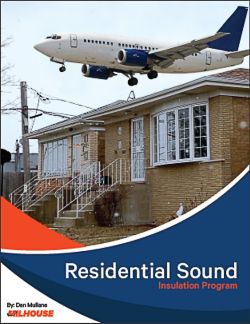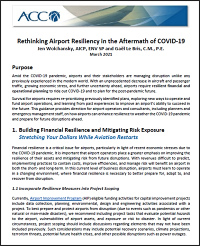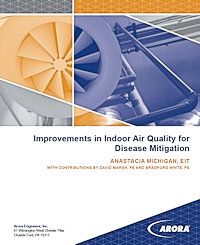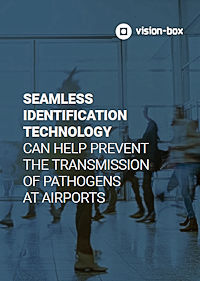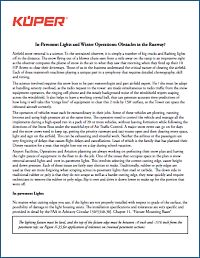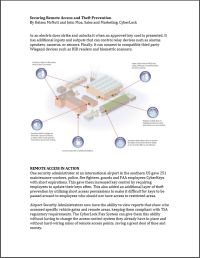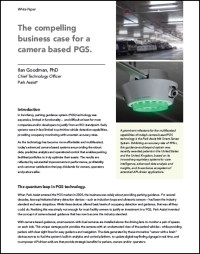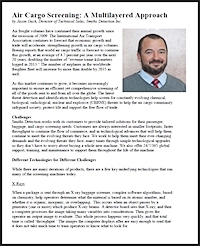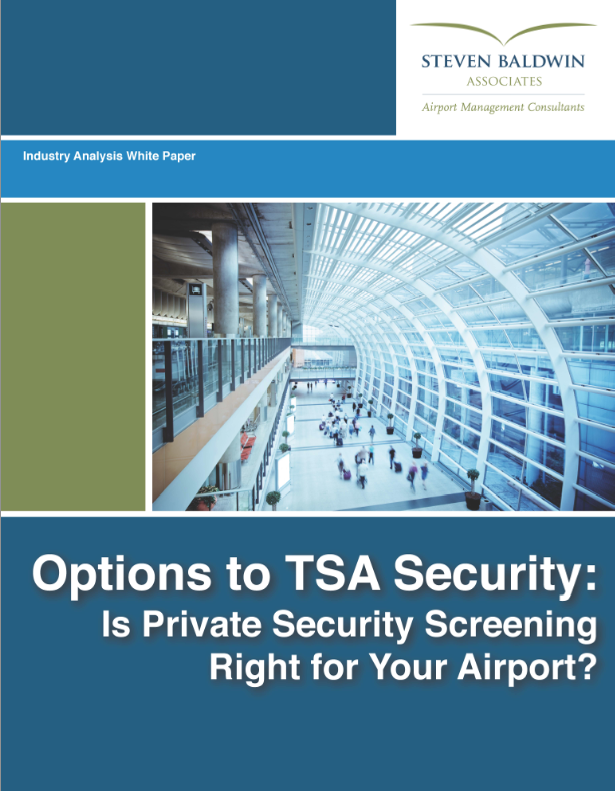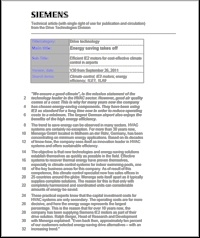White Papers
White Paper
Face The Future - Get it right: SITA biometrics white paper
 GENEVA – 4 April 2024 – In 1930, there were only around 6,000 passengers travelling by air. By 1934, this had risen to just under 500,000*. Fast-forward to 2019 and it had exploded to 4 billion travelers. In fact the International Air Transport Association (IATA) projects 8 billion air travelers annually by 2040. The demand for air-travel is booming.
GENEVA – 4 April 2024 – In 1930, there were only around 6,000 passengers travelling by air. By 1934, this had risen to just under 500,000*. Fast-forward to 2019 and it had exploded to 4 billion travelers. In fact the International Air Transport Association (IATA) projects 8 billion air travelers annually by 2040. The demand for air-travel is booming.
To prepare for this, 425 major construction projects (worth around US $450 billion) were already put underway at existing global airports. The industry also invested in 225 new airport projects in 2022, according to the Centre for Aviation. Bricks and mortar infrastructure is only part of the solution though. Without state-of-the-art, adaptable digital solutions, airlines and airports will struggle to manage passenger numbers. This will affect the quality of the travel experience they’re able to deliver.
SITA’s Biometrics White Paper ‘Face the Future’ highlights how the surge in air traveler numbers places extraordinary pressure on existing and new airports, national borders, and airline resources. In short, “existing paper-based and manual travel infrastructure and legacy processes simply won’t be able to cope.”
The white paper takes us behind the scenes by showcasing successful case studies like the Star Alliance Biometric initiative and the Indian government’s DigiYatra program. Both cases use the end-to-end biometric passenger processing solution SITA Smart Path.
Face The Future - Get it right: SITA biometrics white paper
White Paper
Navigating the Challenges of Changing Taxiway Designations and Implementing New Signage
 Changing taxiway designations and implementing new signage on an airfield can be more complex than meets the eye. In this blog post, we will explore the intricacies involved in modifying taxiway designations, coordinating changes, and implementing new signage systems. We will also discuss the challenges associated with the updated approach and departure surfaces, signage, and markings. By understanding these complexities and taking proactive measures, airports and consultants can navigate these changes smoothly and ensure the highest standards of safety and efficiency.
Changing taxiway designations and implementing new signage on an airfield can be more complex than meets the eye. In this blog post, we will explore the intricacies involved in modifying taxiway designations, coordinating changes, and implementing new signage systems. We will also discuss the challenges associated with the updated approach and departure surfaces, signage, and markings. By understanding these complexities and taking proactive measures, airports and consultants can navigate these changes smoothly and ensure the highest standards of safety and efficiency.
Navigating the Challenges of Changing Taxiway Designations and Implementing New Signage.
White Paper
Ushering in the future of airport operations: Harnessing AI for seamless travel experiences
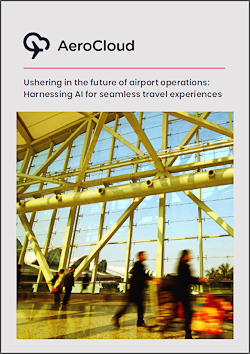 As we witness a return to pre-pandemic passenger numbers, airports find themselves at a crossroads, driven by a determination to provide travelers with a journey free of obstacles and hassles. Nevertheless, the persistent reliance on manual processes in areas like check-in, boarding, and security presents formidable hurdles in the pursuit of operational efficiency and long-term enhancements in the passenger experience.
As we witness a return to pre-pandemic passenger numbers, airports find themselves at a crossroads, driven by a determination to provide travelers with a journey free of obstacles and hassles. Nevertheless, the persistent reliance on manual processes in areas like check-in, boarding, and security presents formidable hurdles in the pursuit of operational efficiency and long-term enhancements in the passenger experience.
To overcome these challenges, many forward-thinking airports are turning to innovative technologies, with a strong focus on the burgeoning field of artificial intelligence (AI). AI, which has surged in popularity in recent years, is now firmly on the radar of airports and the broader travel industry, as well as others. Projections suggest that the AI market will reach a staggering $90 billion by 2025 as organizations harness AI’s capabilities to augment user experiences, streamline operations, and boost productivity.
But, how does AI translate into tangible improvements within the airport ecosystem? In this whitepaper, we explore four distinct examples illustrating how AI is currently revolutionizing the airport experience.
Ushering in the future of airport operations: Harnessing AI for seamless travel experiences.
White Paper
Guide to Fabric, Spaces, and Costs - Making or Breaking Customer Experience
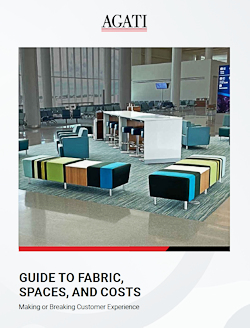 There are many things to consider when choosing the right furniture for high-traffic spaces like airports. These are spaces where durability gets put to the test.
There are many things to consider when choosing the right furniture for high-traffic spaces like airports. These are spaces where durability gets put to the test.
Agati is devoted to making some of the most innovative and durable furniture for public spaces. This means that everything from the cushion to the back to the feet needs to hold up to the sometimes thousands of users that may pass through your space over the span of a day.
We spend the extra time to craft our pieces to withstand high-traffic wear and tear so you can know that your investment in furnishing your space will last for years to come. We have meticulously tested hundreds of foam and material combinations to strike the perfect balance between comfort and durability.
But let’s talk about the most vulnerable part of any furniture—the fabric. This is the most susceptible to wear and tear as it is the most used and the softest material that makes up your seating.
Finding the balance between style and durability can be challenging when it comes to selecting a fabric to match the aesthetic of your space but still hold up to heavy use. Picking the right fabric with durability in mind will keep those instances to a minimum..
This whitepaper highlights what things to look out for when it comes to selecting a fabric for your high-traffic space:
Guide to Fabric, Spaces, and Costs - Making or Breaking Customer Experience.
White Paper
2022 Charlotte Douglas International Airport Report of Achievement
 Giving back to the community is central to what Charlotte Douglas International Airport and its operator, the City of Charlotte Aviation Department, is about, and last year was no different.
Giving back to the community is central to what Charlotte Douglas International Airport and its operator, the City of Charlotte Aviation Department, is about, and last year was no different.
Throughout 2022, while recovering from the COVID-19 pandemic, we continued our efforts to have a positive impact on the Charlotte community. Of particular note, we spent the year sharing stories of how Connections Don't Just Happen at the Terminal - from creating homeownership and employment opportunities to supporting economic growth through small-business development and offering outreach programs to help residents understand the Airport better.
This whitepaper highlights the construction projects, initiatives, programs and events that validate Charlotte Douglas as a premier airport.
Download the whitepaper: 2022 Charlotte Douglas International Airport Report of Achievement.
White Paper
Smiths Detection: Digital innovations at the passenger checkpoint
Integrated, data-driven and open security solutions are helping airports around the world transform passenger checkpoints and achieve the highest levels of security and operational efficiency. Driven by artificial intelligence, automation and connectivity, new digital technologies push productivity up and bring costs down - and ultimately improve passenger experience.
Screening equipment is at the heart of every checkpoint and, for example, an advanced computed tomography (CT) X-ray scanner together with automatic tray return can alone accelerate the screening process, increase throughput, and make better use of airport resources. Adding digital solutions such as data analytics, AI, networking and centralised or remote screening delivers exciting new capabilities and is proven to boost efficiency further and take safety and passenger experience to completely new levels.
This whitepaper highlights digital innovations that are making aviation safer and threat detection more efficient.
Download the whitepaper: Smiths Detection: Digital innovations at the passenger checkpoint.
White Paper
Residential Sound Insulation Program
Many residents of major cities like the convenience of living near an airport; however, many don’t realize just how loud takeoffs and landings of jet airplanes can be. This is particularly problematic for older homes that haven’t been updated with the latest sound insulation technology. Without proper sound insulation, the noise from jet airplanes creates constant interruptions of everyday activities such as television watching, telephone conversations, face-to-face conversations, and sleep. Cities are working with residents to help mitigate these constant interruptions by replacing their windows and doors with modern versions that include high-quality sound insulation.
Sound insulation is the process of reducing the amount of sound that enters or exits a building or room. For residential properties, sound insulation is an effective solution to reducing aircraft noise pollution.
This whitepaper highlights successful strategies and best practices for utilizing sound insulation as an effective solution for reducing aircraft noise pollution.
Download the complete whitepaper: Residential Sound Insulation Program.
White Paper
Download TRC - Helping Airports Identify and Mitigate PFAS Risks
In the aviation industry, PFAS-containing aqueous film-forming foams (AFFF) are used in fire responses and training. PFAS are a group of more than 12,000 man-made chemicals that can be found in a variety of products. The regulatory framework and science of PFAS are rapidly evolving, creating business and environmental risks related to AFFF storage, management and use. Emerging issues for airports include new regulatory requirements for sampling and characterization, impacts of AFFF releases to the environment and the transition from legacy to modern or fluorine-free foams. In our extensive experience working to mitigate and remediate the impacts of PFAS, we have encountered a variety of unique situations at airport sites, requiring innovative solutions to address.
This whitepaper highlights successful strategies and best practices for identifying and mitigating PFAS risk at airports.
Download TRC - Helping Airports Identify and Mitigate PFAS Risks.
White Paper
Kuper - Snowplow Blades for Airports - GK5 POLY
The low-noise GK5 Poly blade is made of rubber with polyurethane inserts. Thanks to the blade’s elastic materials and clever design, the GK5 Poly adapts perfectly to every paved surface. It is the ideal solution for removing snow in areas that require pavement and plow protection.
This is the only rubber blade that won’t jump when used on dry surfaces — an absolute must for operations. The highly elastic materials, embedded polyurethane inlays and specially curved steel fastening neck ensure excellent results while protecting the surface of the tarmac and cleaning very well.
Download Kuper - Snowplow Blades for Airports - GK5 POLY.
White Paper
Burns’ Guide to Airport Electrification
Until now, electrification initiatives occurred at the discretion of proactive airports.
Moving forward, airports will have to react as stakeholder demand and new regulations lead to the rapid expansion of vehicle charging infrastructure, all-electric building systems, and other emission-reduction measures.
Long-term electrical master planning is more important than ever before. Follow this guide for strategies to add power capacity, maintain reliability, and eventually decarbonize airport facilities.
Download Burns’ Guide to Airport Electrification.
White Paper
Introduction to Airport Experiential Multimedia Systems
Advanced multimedia technologies are creating unforgettable travel experiences at airports across the country.
As competition among airports reaches new heights, authorities can enhance passenger satisfaction — and potentially raise new sources of revenue — with awe-inspiring digital canvases, hyper-targeted visual communications, and stunning media amenities.
Burns Engineering shares expertise from developing, procuring, and managing construction of some of the largest, most-ambitious specialized technology systems from across the country. Click through to see how authorities can maximize the impact of their multimedia installations.
White Paper
Easing Passengers through CPB, Security, and Beyond
Over 73 million customers pass through Dallas Fort Worth International Airport (DFW) every year, making it one of the world’s most frequently visited superhub airports. Many international travelers pass through DFW, and the customer experience team wanted to help non-English speakers navigate through customs, security, and on to connecting flights easily. By providing helpful wayfinding instructions, walk and wait-time data, visual messaging, and essential information as translated content, DFW could enhance operations and better serve their customers in areas where passenger anxiety typically spikes.
Read our white paper to learn how the new content and digital signage system extension resulted in a friendly, more accessible airport.
Click here to download the case study: Easing Passengers Through CPB, Security, and Beyond
White Paper
Mounted Bearing Locking Trends In Unit Material Handling Applications
Recent trends for locking mounted ball and roller bearings in unit material handling, such as baggage handling conveyors, has shifted from traditional setscrew locking designs to newer, concentric locking solutions. Concentric locking results in more near-perfect concentricity, quieter operation, increased lock reliability, higher speed of operation, and less damage to the shafting, resulting in improved equipment performance and increased uptime.
Read our white paper to learn more about concentric lock designs and how you can improve equipment performance and increase uptime.
White Paper
A seamless digital experience at the airport now an essential not a luxury says new research from Airport Dimensions
Research published today by Airport Dimensions highlights the ways in which airports need to evolve to meet changing passenger expectations. In a new Whitepaper called “Understanding Tomorrow’s Traveler”, the company says a dramatically reshaped passenger demographic means the old rules no longer apply when it comes to keeping airport passengers happy.
Airport Dimensions’ research shows that Millennial and Gen Z passengers now account for three quarters of the market compared with two thirds before the pandemic. As this demographic increasingly dominates the market, airports need to consider how effectively they understand and are engaging with these new customer segments, who think and behave very differently to their parents.
Satisfaction with the airport experience has nudged up by nearly 2% to 62% over the past two years. To keep this on the right trajectory, Airport Dimensions says that airports need to make sure they are getting the basics right when it comes to providing amenities such as seating. It’s also imperative to use the best current technology to provide a single digital interface for all services, providing better and more flexible options for ordering and collection. Finally, they should work with concessions to drive better targeted promotions which demonstrate real value for the traveler.
While engagement with the airport has dropped, the use of mobile apps, membership programs and desire for regular communication all remain steady or have increased slightly, suggesting passengers do still want a relationship with their airports. However, Airport Dimensions concludes that too many airports are not taking advantage of the opportunity to connect and build dialogue. Airports need to use data more effectively in order to send the right message to the right customer at the right time, offering improved and more appropriate incentives. They also need to understand that growing availability of information about off-airport retail means they need to work harder to win business.
Nearly three quarters of passengers say they feel there is too much retail at the airport, and while travelers are keen to shop, they do not want to do so at the expense of comfort and other facilities. This means that airports need to look at more imaginative ways of generating non-aeronautical revenue, such as making retail more engaging and immersive, alongside more experiential services. The construction of a hybrid space that combines retail with other amenities such as seating could also provide a lucrative alternative to standard shopping.
Mignon Buckingham, CEO of Airport Dimensions, said; “Our Understanding Tomorrow’s Traveler Whitepaper is essential reading when it comes to making decisions within the changed landscape of the airport. Today’s tech-savvy traveler has developed new attitudes and habits over the past two years. As travel continues its return, it is vital for airports to understand exactly what these changes mean, and how they provide an experience that blends the best of physical and digital in the way their passengers want. Whilst most airport commercial teams recognize the need for change, many are uncertain about how to take the first steps on that journey, and how to ensure they get buy-in from the rest of their organization. This Whitepaper will help to put airports on the right path to create a blueprint for a successful future.”
The Airport Dimensions Airport Experience survey was conducted in partnership with leading market research agency Dynata. The research draws from the experiences of 6,024 air travelers covering a wide and representative cross-section of demographics.
White Paper
Case Study: Berlin Brandenburg Airport Willy Brandt
The German capital’s new airport, which is resourced with a total of two parallel runways and three terminals, went operational in autumn 2020 when the south runway was commissioned. The airport can currently handle 46 million passengers a year, and planned extensions are intended to increase that figure in the future.
White Paper
Integration of GIS with CMMS & EAM Systems
A growing number of Airports, Warehouses, private and public utilities today are implementing Computerized Maintenance Management Systems (CMMS) and Enterprise Asset Management (EAM) systems. In 2019, the CMMS software market was worth $0.92 billion. By 2027, it is expected to reach $1.77 billion, increasing at a compound annual growth rate (CAGR) of 8.58% during 2020-2027.
White Paper
UV-C Disinfection in Airport HVAC Systems: Covid-19 and Beyond
The Covid-19 pandemic has increased demand for UV-C disinfection to help control the airborne spread of SARS-CoV-2 in buildings.
- Benefits of UV-C disinfection and Indoor Air Quality
- Current practices for the design and selection of UV-C systems for various applications
- Strategies for implementing effective UV-C solutions for sustained protection and value
White Paper
NORD DRIVESYSTEMS: Driving Baggage Handling Efficiency
As airports seek technological improvement and operational efficiencies in baggage handling systems, NORD DRIVESYSTEMS, a global leader in drive technology for mechanical and electronic solutions, plays an integral role in delivering high-performance baggage handling systems to some of the world’s busiest airports. NORD is represented in 98 countries and its customers benefit from a global production, assembly service, and sales network.
In 2017, Miami International Airport (MIA) upgraded the Checked Baggage Inspection Systems (CBIS) for the South and Central Terminals. Under a contract with Jervis B. Webb (Daifuku) as installer and integrator, the entire Central Terminal system was replaced and the South Terminal system was modified and enhanced with newer technology. According to Adonis Schmidt, project engineer with Daifuku, a primary goal of the project was to improve throughput over the old system to keep up with projected passenger growth at the southern Florida airport.
White Paper
ACC: Rethinking Airport Resiliency in the Aftermath of COVID-19
Amid the COVID-19 pandemic, airports and their stakeholders are managing disruption unlike any previously experienced in the modern world. With an unprecedented decrease in aircraft and passenger traffic, growing economic stress, and further uncertainty ahead, airports require resilient financial and operational planning to ride out COVID-19 and to plan for the post-pandemic future.
Survival for airports requires re-prioritizing previously identified plans, exploring new ways to operate and fund airport operations, and learning from past experiences to improve an airport’s ability to succeed in the future. This guidance provides direction for airport operators and consultants, including planners and emergency management staff, on how airports can enhance resilience to weather the COVID-19 pandemic and prepare for future disruptions ahead.
White Paper
ACC: IT Procurement On Capital Projects - Best Practices
Capital projects are very “brick and mortar” focused with significant emphasis on physical construction. While “brick and mortar” design and procurement packages tend to be straightforward (you can see what you are building) , Airport IT Systems are far more complex (system functionality and data transactions occurring amongst systems are not physically visible but logical by design). With the increasing application of digital technology in the development of smart buildings and growing operational systems applications, the procurement of technology systems is becoming more of a focus by airport operators due to the positive impact on operational efficiency and the passenger experience.
White Paper
PAVIX: Proven Winner for All Airport Concrete Infrastructure
International Chem-Crete Corporation (ICC) manufactures and sells PAVIX, a unique line of crystalline waterproofing products that penetrate into the surface of cured concrete to fill and seal pores and capillary voids, creating a long lasting protective zone within the concrete substrate.
Once concrete is treated, water is prevented from penetrating through this protective zone and causing associated damage, such as freeze-thaw cracking, reinforcing steel corrosion, chloride ion penetration, and ASR related cracking.
This white paper discusses how the PAVIX CCC100 technolgy works and its applications.
White Paper
Fairbanks International Airport Baggage Transport Conveyor Enhanced With Mod Drive™ System
Airports face a host of unique industry challenges, such as meeting efficiency regulations and seeking out the best maintenance practices to reduce costs and keep operations flowing. In today’s current economic climate, any potential cost savings can go a long way.
In 2019, Alaska’s Fairbanks International Airport (FAI) sought to modernize its equipment and operations. They were dissatisfied with the performance of the gearmotors on their baggage transport conveyors and began searching for new suppliers. Regal approached FAI with a solution that could improve equipment performance and simplify maintenance, with the added benefit of energy cost savings: the Hub City® MOD Drive™ system.
This white paper discusses the hardware deployed, the test results and the annualized expectations for ROI.
White Paper
Blue Grass Airport upgrades six separate zones to smart LEDs
Project Details
Lexington Blue Grass Airport (LEX), nestled in the heart of Kentucky, is growing at a record pace. The annual number of passengers traveling through the airport have increased consistently for the past eight years. Four major airlines operate out of Blue Grass Airport, and they are continuing to add flights and larger aircraft.
Challenge
To facilitate its rapid growth, the airport is continuously updating its facilities to provide the most modern, convenient and safety-conscious services possible. The traditional HPS fixtures at Blue Grass Airport needed to be replaced as the airport wanted to provide higher efficiency, optimal light quality and the ability to fully control the lighting.
Solution
Blue Grass Airport worked with Phoenix and HDR Engineering to design a solution that combined reliable LED fixtures and Phoenix’s proprietary lighting intelligence technology. They replaced 161 existing 1000W HPS fixtures with 145 Highland Series LED high mast lights - 95 500W fixtures and 50 250W fixtures – all installed by Whalen Electric. Phoenix’s LIT System™ is installed on all 145 fixtures and divided into six separate zones, which can be controlled individually as operations require. Blue Grass Airport is able to use all the key functions including dimming by individual zone and sunset/sunrise settings.
White Paper
Improvements in Indoor Air Quality for Disease Mitigation
Of the various IAQ technologies available, use of Bipolar Ionization applied within new or existing HVAC systems has merit, subject to further specific investigation. When incorporated into standard HVAC duct systems, the distribution of ions tends to be better than when deployed directly within the space. In addition, ultra-violet spectrum C (UV-C) light has an application on return air filtration, but less-so in other parts of air handling units.
Local air cleaners for small rooms have at least an experimental application due to their low cost and apparent space requirements, but do not lend themselves to public passenger spaces due to their size and scale.
An air handling unit-based mitigation system would be less effective in removing pathogens during economizer cycle operation because space air would not be returned through the unit supply train for recirculation. Economizer operation provides more outside air to flush the space, but it does not clean the recirculated air.
This report focuses on possible improvements to both new and, to a lesser extent, existing HVAC systems at airports to improve indoor air quality (IAQ). However, the approaches listed within this document may be applicable to any public building or HVAC system, including but not limited to schools, retail facilities, transportation hubs, and community centers. Even though this report has an emphasis on the approaches to consider for an airport, we would like to share our simplified list of possible approaches any facility could implement to improve their indoor air quality.
White Paper
Defining a New Standard of Clean at US Airports
It is clear to America that one of the many industries heavily impacted by the COVID-19 Global Pandemic is the Airline industry. The collapse in demand is unprecedented and they are struggling to align their priorities of increasing the confidence of employees and passengers regarding their safety with the economic need to keep passengers flowing. Airports everywhere are doing their best to help contain the spread of the virus – protect people – and survive this global pandemic.
Prior to the global outbreak, more than 2.7 million passengers flew every day (over 1 billion annually) in and out of U.S. Airports. Those passengers were supported by more than 10.6 million employees across the aviation industry.
As we begin to practice “social distancing” in our daily lives there is a heightened sensitivity to maintaining our new standard of clean wherever we travel. In recent years, America’s airports have made great progress to enhancing the passenger journey experience at every touch point possible. Amid the recent global pandemic, airport facility managers must lean on new data driven technologies to be proactive in meeting the traveling consumers expectations.
This white paper explores the responsibility for defining and maintaining our nation’s airport cleaning standards and how new technologies can assist airport management in communicating consistent, real-time and safety focused confidence to the traveling public.
Click here or on the cover to access a PDF version of the complete whitepaper.
White Paper
Seamless Identification Technology Can Help Prevent The Transmission Of Pathogens At Airports
Because of the continuous growth of global travel, the risk and facilitation of the quick spread of person-to-person or surface-to person transmissible pathogens at airports is steadily increasing. The hard and smooth surfaces of clearance touchpoints used by travelers can be a major contributor to pathogen transmission since these surfaces transmit microbes much more efficiently than soft surfaces. Reducing this method of communicable disease transmission represents an important challenge for airports and airlines. Current global travel patterns and increasing passenger capacity demand that the aviation industry play an important role in reducing the transmission of communicable diseases.
A real risk to current airport operational models and passengers is the presence and transmission of communicable pathogens when travelers interact with touchpoints and airport personnel. Identity Management Platforms leveraging touchless biometrics and contactless passage through security, border control and boarding offer airports hygienic advantages that mitigate the risk of pathogen transmission. Additionally, Seamless Flow solutions optimize and speedup passenger clearance using biometric identification that can increase personal space between passengers and reduce pathogen exposure. This is accomplished by enrolling both travel documents and facial images at airport check-in or remotely using digital mobile ID apps. Subsequent airport touchpoints then automatically recognize and authenticate the traveler’s face and identitying a few seconds, thereby eliminating the need to physically interact with potentially infected surfaces or exchanging documents with an agent or officer. Additionally, identical seamless clearance procedures throughout the passenger journey eliminate time-consuming identification tasks and establish a faster clearance for both inbound and outbound passengers. This means travelers can leave the airport quicker and reduce the number of passengers present inside the premises.
Click here or on the cover to access a PDF version of the complete whitepaper.
White Paper
In-Pavement Lights and Winter Operations: Obstacles in the Runway?
Airfield snow removal is a science. To the untrained observer, it is simply a number of big trucks and flashing lights off in the distance. The snow flying out of a blower chute seen from a mile away on the ramp is an impressive sight as the observer compares the plume of snow in the air to what they saw that morning when they fired up their 10 HP Ariens to clear their driveways. Those of us in the business understand the critical nature of clearing the airfield. Each of these mammoth machines playing a unique part in a symphony that requires detailed choreography, skill and timing.
The science involved requires the snow boss to be part meteorologist and part airfield expert. He / she must be adept at handling sensory overload, as the radio request to the tower are made simultaneous to radio traffic from the snow equipment operators, the ringing cell phone and the steady background noise of the windshield wipers scaping across the windshield. It also helps to have a working crystal ball, that can generate accurate time predictions of
how long it will take this “conga line” of equipment to clear this 2 mile by 150’ surface, so the Tower can space the inbound aircraft correctly.
Click here or on the cover to access a PDF version of the complete whitepaper.
White Paper
Quantifying the impact of Park Assist’s Parking Guidance Solution on customer experience
In addition to elevating the overall customer experience for visitors, one of the primary benefits of installing a parking guidance system (PGS) is an overall reduction in the time taken to park. Up to now, little has been done in the industry to objectively quantify the effects that a PGS has on driver decision-making and the parking experience itself. General assumptions have been derived from limited manual observation-based studies, customer feedback and onsite observations.
In collaboration with the Brisbane Airport Corporation, Park Assist recently completed a groundbreaking benchmarking study on the quantitative impacts of its M4 PGS on the time between vehicles entering the car park and parking in a vacant bay (referred to in this whitepaper as “Time to Park”).
To our knowledge, based on the methodology used and sample size, it is the first of its kind in the industry. Conducted over a period of five months, our results emerge from the acquisition of nearly 1.2 million data points, translating to a total of 127,284 unique customer journeys.
This white paper explores the findings of the study, which verify the ability of a PGS to make the parking experience far more streamlined, consistent and user-friendly. It also takes a look at the design and execution of the supporting science-based methodology used to ensure accuracy and integrity in the results.
Click here or on the cover above to access a PDF version of the complete whitepaper.
White Paper
Linear Taxiway Lighting
Luminaerospace, LLC demonstrated this new lighting fixture at Ohio’s Cleveland Hopkins Airport (CLE) for over a year, through all weather conditions. The system allows Pilots to intuitively recognize the actual pavement edges at night and/or in inclement weather. Additional enhancements have been made that allow advanced cockpit displays to detect infrared light for heads up displays and night vision goggles. The new lights improve pilot situational awareness even in good weather.
Members of Luminaerospace, LLC are comprised of both aviation professionals and experienced passengers who recognized the need for improved boundary recognition. Luminaerospace, LLC was founded in 2010 as an intellectual property holding company for the patents related to elevated linear lighting segments. Patents have been granted in North America, Europe and Asia with additional protection pending in South America. The need for an improved boundary edge light has been recognized by pilots, airport personnel and passengers. The enhancement of this Pavement Edge Light Safety System has been embraced by many in the aviation community.
For this safety improvement to be released, lighting manufacturers will proceed with design of their own versions to be certified by Intertek in accordance with the existing FAA specifications. It is the mission of Luminaerospace, LLC to license this technology to all existing airport lighting manufacturers and to encourage industry wide use of elevated linear lighting.
Click here or on the cover above to access a PDF version of the complete whitepaper.
White Paper
Embracing the Internet of Things
Smart thermostats, camera-equipped doorbells, and talking virtual assistants have become commonplace in homes today. The goal of these technologies is to automate common tasks and make our lives easier.
Similarly, airports are in an advent of technology, and are seeing exciting innovation with the Internet of Things (IoT). Air travel can often be filled with anxiety. The uncertainty of large crowds, long lines, confusion and delays when traversing the airport is not something most passengers look forward to. Imagine a smart, information-rich airport experience beginning at arrival and check-in, continuing through security, finding your gate, the lounge and retail experience, boarding your plane, inflight entertainment and connectivity, all the way through the hunt for your bag when you arrive at your destination.
The IoT improves and interconnects technology, shifting the focus from people-to-people to thing-to-thing communication. In the end, though, the goal is to revolutionize the ways in which people access and consume useful information – and airports are at the forefront of this technology revolution.
Click here or on the cover above to access a PDF version of the complete whitepaper.
White Paper
The Five Ds: Securing the Nation’s Aviation Infrastructure
Airports are undoubtedly a “critical infrastructure” in the United States. It’s a delicate balancing act to maintain an airport’s security infrastructure, while remaining mindful of the impacts security measures can have on passenger satisfaction and the quest for rapid and seamless travel.
An airport carries an intrinsic vulnerability, as it spans a very large area and contains multiple access points. Attempting to fortify the entire system is impractical for multiple reasons. A more adaptable and effective way to look at airport security is to consider multiple rings of defense.
“The Five D’s”: Deter, Detect, Deny, Delay, and Defend – is part of established security practice – and has relevant application in the design of an effective, layered airport security approach. Each plays a specific role in securing your aviation’s instructure. The following provides an overview of the key principles of 5D.
Click here or on the cover above to access a PDF version of the complete whitepaper.
White Paper
Strengthening the Airport Value Proposition
With global growth in passenger volumes set to continue, the competition amongst airports is likely to intensify. Airport operators must now demonstrate the value that they bring in the areas of operational efficiency and passenger experience. Both are central to airline decision-making when it comes to airport selection and airport relationships.
Modern technology now offers airports a significant tool to enhance the value that they offer to airlines. It offers advantages in easing the passenger journey, and enhancing the travel experience. By incorporating IT into its value proposition an airport can strengthen its positioning and points of differentiation. Airports who do are in a better position to protect aeronautical revenues by justifying fees, as well as in delivering new and innovative services.
This paper explores how airports can include IT into their value proposition to airlines and what this means both for airlines, as well as the passenger experience.
Click here or on the cover above to access a PDF version of the complete whitepaper.
White Paper
Seven Key Placements for Airport Digital Signage
By using digital signage for general information, wayfinding, alerts and advertising in key locations, airports can elevate their brand image and provide experiences that create real value. Not only will arriving and departing passengers nd their way around more easily; they will be more apt to spend extra time in the airport, and patronize vendors, when the environment is visually engaging and accommodating.
As a total transportation display solutions provider, LG offers a wide range of durable and reliable commercial displays along with the software platforms for easy integration and remote management. This eBook addresses seven key placements for airport digital signage, and the recommended display features to maximize ROI.
Click here or on the cover above to access a PDF version of the complete whitepaper.
White Paper
Leveraging guidance-and-beyond technology to revitalize airport profitability
Today’s on-airport parking facilities are dealing with an unprecedented set of pressures and challenges that are eroding parking revenues, straining resources and driving up operational costs. Until recently, efforts to solve these problems via new technologyhave been largely ineffective at best, and a dismal failure at worst.
With powerful data mining capabilities and innovative customer-centric features, today’s camera-based parking guidance systemshave emerged as a viable single-source solution to help combat the disparate issues of stagnant or declining revenues, operational inefficiencies, and the relentless onslaught of off-site competition.
This white paper looks at the multiple benefits of investing in an advanced camera-based parking guidance system (PGS), a smart-infrastructure solution that is growing exponentially in terms of real-world deployment.
Click here or on the cover above to access a PDF version of the complete whitepaper.
White Paper
Securing Remote Access and Theft Prevention
Challenge: TSA regulatory requirements state that airport operators must show control of all the access points in their air operations area (AOA). For most airports, this means securing hundreds of remote access points and managing access for hundreds of key holders. Threats of insider theft by personnel add another layer of concern for airport operators. After 9/11, many airport systems were upgraded to increase security, but still for many, an update is crucial. An estimated shelf life of an access control system today is about 15 years old, with many airports utilizing systems over 25 years old.
Solution: The CyberLock Flex System is the only access control solution that offers both hardwired and key-centric technologies within one software package. With the Flex system, an airport can keep their existing card reader hardware, while also securing hundreds of remote access points with CyberLock padlocks.
Click here or on the cover above to access a PDF version of the complete whitepaper.
White Paper
The compelling business case for a camera based PGS.
In its infancy, parking guidance system (PGS) technology was expensive, limited in functionality – and difficult at best for most companies and/or developers to justify from an ROI standpoint. early systems were in fact limited to primitive vehicle detection capabilities, providing occupancy monitoring with uncertain accuracy rates.
As the technology has become more affordable and multifaceted, today’s advanced camera based systems are providing the robust data, predictive analytics and operational control that enables parking facilities/portfolios to truly optimize their assets. The results are reflected by substantial improvements in performance, profitability and customer satisfaction that pay dividends for owners, operators and parkers alike.
Click here or on the cover above to access a PDF version of the complete whitepaper.
White Paper
Air Cargo Screening: A Multilayered Approach
Air freight volumes have continued their annual growth since the recession of 2009. The International Air Transport Association continues to forecast that economic growth and trade will accelerate, strengthening growth in air cargo volumes. Boeing reports that world air cargo traffic is forecast to continue this growth, at an average of 4.7 percent per year over the next 20 years, doubling the number of “revenue tonne-kilometers logged in 2013.” The number of airplanes in the worldwide freighter fleet will increase by more than double by 2035 as well.
As this market continues to grow, it becomes increasingly important to ensure an efficient yet comprehensive screening of all of the goods sent to and from all over the globe. The latest threat detection and identification technologies help screen for constantly evolving chemical, biological, radiological, nuclear and explosive (CBRNE) threats to help the air cargo community safeguard society, protect life and support the free flow of trade.
Click here or on the cover above to access a PDF version of the complete whitepaper.
White Paper
An Analysis of the TSA Screening Partnership Program: The Options for Private Staffing of Passenger and Baggage Screening at Airports
The events of September 11, 2001 prompted a significant increase in the Federal government’s involvement in airport security and operational matters. However, many aspects of these Federal aviation security programs and procedures have been debated by industry analysts and airport managers as to their effectiveness. One of these topics of debate is the issue of staffing at security checkpoints, particularly whether staff should be Federal employees or private security service employees. The debate is largely driven by customer service requirements as opposed to security requirements. However, both sides of this debate have their supporters. Overall in the industry, using Federal employees has been the trend at more airports to date. In spite of this, the alternative of using private employee services continues to remain a viable option and is supported through a series of official Federal programs and efforts.
Over time, this alternative option of employing private service contractors for security screening has evolved into the current Screening Partnership Program (SPP) administered by the Transportation Security Administration (TSA). Under this program, if an airport would prefer to use private security employee services for passenger and baggage screening, it submits an application form to the TSA; after review and approval by the TSA, private screeners (subject to TSA supervision and jurisdiction) are typically in place at the airport within a year.
Today, entry into the program is quick and simple. The process is hands‐free, which is both an advantage and disadvantage to the airport. All airports surveyed by SBA report an excellent relationship with the private services and appear to be highly satisfied with the program. In particular, the program offers staffing flexibility that the TSA has difficulty with or, in some cases, cannot provide. Also, airports report increased customer service and customer satisfaction with the private staffing option.
Taking the research and airport experiences into account, SPP vendors have proven to compete with the TSA screening service on all aspects of performance. In fact, measurable screening performance appears to favor the private screening alternative, but not by an overwhelming factor. Overall, airport sponsors that have specific needs or goals that can be met using the SPP—particularly around scheduling flexibility and customer service enhancements—should consider it as a viable option.
Given that many airports could benefit from the increased flexibility in staffing and scheduling that the SPP provides, and given that many airports desire an improved customer service environment, we conclude the Screening Partnership Program could be successfully used by a wide variety of airports. In particular, a switch to the SPP may help alleviate issues such as long screening lines during peak passenger times as well as mitigate resulting issues such as dissatisfied passengers, airlines having to delay flights, and baggage left behind.
Click here or on the cover above to access a PDF version of the complete whitepaper.
White Paper
Energy saving takes off: Efficient IE2 motors for cost-effective climate control in airports
The trend to save energy can be observed in many sectors. HVAC systems are certainly no exception. For more than 30 years now, Menerga GmbH located in Mülheim an der Rühr, Germany, has been concentrating on minimum energy applications. Based on its decades of know-how, the company sees itself as innovation leader in HVAC systems and offers sustainable efficiency.
The objective is that new technologies and energy-saving solutions establish themselves as quickly as possible in the field. Effective systems to recover thermal energy have proven themselves, especially in climate control systems for indoor swimming pools, one of the key business areas for this company. As of result of this competence, this climate control specialist now has sales offices in 25 countries around the globe. Menerga sets itself apart as it typically supplies complete solutions. The reason for this is that only with completely harmonized and coordinated units can considerable amounts of energy be saved.
These practical experts know that the capital investment costs for HVAC systems are only secondary. The operating costs are far more decisive, and here the energy usage represents the largest percentage. This is the reason that for over 10 years now, the company has been supplying Siemens IE2 motors as part of their drive solution. Ralph Berger, Head of Research and Development with Menerga explained: "Even back then, approximately ten percent of our customers selected energy-saving drive alternatives - with an increasing trend..."
Click here or on the cover above to access a PDF version of the complete whitepaper.
White Paper
10 Key Characteristics for Effective Snow and Ice Removal Background - 2012

|
Brooms first began to be used for airport snow removal in Canada in the mid-1950s. Convinced sweeping could be used in conjunction with plowing to make runways safer for the new high-speed jet airplanes, Transport Canada issued a request for development and testing of a runway sweeper.
United Rotary Brush was one of the early - and only successful - broom manufacturer respondents to this RFP and has worked with Canada's Department of National Defense (DND) and sweeper manufacturers for the past several decades to refine the testing and qualification procedures. DND specifications continue to be the standard of reference for the industry today.
Effective removal of snow, ice and slush from runways is essential to efficient airport operations. The presence of snow, ice and slush can cause serious safety concerns. Lack of traction can impede acceleration on takeoff, interfere with deceleration at landing, and interfere with directional control. In addition, frozen debris can cause severe damage to tires, engines and airframes.
These conditions also raise business concerns. Flight delays or cancellations interfere with airline schedules, not only at the airport selected, but throughout the system. Such interruptions have dramatic impact on airline customer satisfaction and are increasingly the focus of passenger advocacy groups. In addition, cancelled flights represent lost revenue, both to the airlines and airports involved.
Click here or on the cover above to access a 2mb PDF version of the complete whitepaper.
White Paper
Airport Owners - Guide to Project Delivery Systems - 2nd Edition - 2012
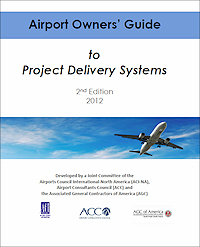
|
Airport managers want projects done timely, economically and with high quality. As airport markets have matured, the redevelopment of facilities has become more complex and costly, with projects more likely to generate high impact on operations and the need to work around passengers, aircraft or ground vehicles. We started the Airport Owners - Guide to Project Delivery Systems to introduce aviation management and development professionals to techniques for procuring and conducting design and construction projects that other industries had found to be useful. It arose from a level of frustration by all of the stakeholders in airport development, the airport owners and operators, the design professionals and the construction companies, all of whom were tending to focus more time and attention in protecting their interests in the event of project failure and less time and attention positioning the project for success.
The Guide is designed for use by the airport executive who must make the decision on the appropriate delivery method, and convince the governing authority that it is indeed appropriate; for the development professional who must make the recommendation to the executive and carry out the owner's role in the project 's delivery; and for the procurement practitioner who must undertake the proper contracting processes and documentation for selection of the contracting parties and administration of the project contracts in accordance with the laws, regulations and obligations of the owner, and, often, state and federal governments.
The Guide contains sufficient detail for each of these role players to understand the characteristics and potential suitability of various project delivery systems and contracting approaches. The airport executive may want to particularly focus attention on the sections describing considerations for selecting a project delivery method, specifically Section III A-D, Selecting the Appropriate Project Delivery System, Appendix C, Alternative PDS Selection: An Owner 's Example, and Appendix F, FAA Grant Program/Airport Improvement Program (AIP) which outlines the constraints and prospects for alternative delivery of FAA grant eligible projects.
Among other things, the Guide identifies for the airport executive the kind of management support that is necessary under various project delivery approaches since the level of staff expertise and time demands on staff vary with the different methods. As well, the airport executive must consider any local political implications of different methods.
The Guide is a reflection of industry trends and opportunities not a promoter of any particular project delivery approach or contracting method. It will always be a work in progress as those trends evolve and additional opportunities for delivering airport projects are explored. We hope it will be used as intended: to open airport owners and operators to the range of possibilities to deliver timely, high quality, cost-efficient facilities to their customers, employees and community.
Click here or on the cover above to access a 12mb PDF version of the complete report.
White Paper
ACRP Guidebook of Practices for Improving Environmental Performance at Small Airports
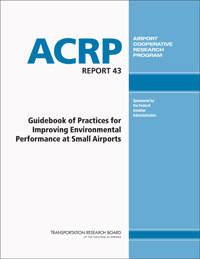
|
Gresham, Smith and Partners, a leading multi-disciplinary design and consulting firm for the built environment, is pleased to announce the Guidebook of Practices for Improving Environmental Performance at Small Airports has been published. Developed by GS&P for the Airport Cooperative Research Program (ACRP), a research program managed by the Transportation Research Board (TRB) of the National Academies, the Guidebook provides managers of small airports with a resource that promotes environmental awareness, identifies federal environmental compliance requirements, outlines practices that proactively enhance environmental stewardship and identifies resources/tools that airports can use to be proactive. The Guidebook is available for free download from the TRB website and a hard copy version is available for purchase.
"We are glad this Guidebook is now available to the aviation community, providing a much needed resource that can raise environmental awareness and promote environmental stewardship," commented Robert W. McGormley, division vice president and senior environmental consultant for GS&P, who served as the project director and principal investigator. "Many small airports have limited environmental expertise and financial resources. Through use of this Guidebook, airports of any size can better understand their environmental regulatory obligations and the considerations for and benefits of implementing proactive environmental stewardship practices, many of which do not require capital costs."
Regulatory summaries presented in the Guidebook are grouped by similar subject matter and consist of high-level overviews of federal environmental compliance requirements including laws, regulations, and other directives. Web-based links to internet sites and documents are provided throughout the Guidebook to further describe the subject matter or provide supporting information. Case studies of environmental programs implemented by other airports offer readers greater insight into the real life experiences of implementing proactive environmental stewardship practices.
The development of this Guidebook was led by GS&P with support from Vanasse Hangen Brustlin, Inc. and KB Environmental Sciences, Inc.
GS&P is currently working with the ACRP on three additional projects to benefit the aviation industry. First, GS&P is developing wayfinding and signage guidelines for airport terminal and landside use aimed at providing a methodology that can be implemented at airports nationwide and provide passengers with consistent, safe and efficient wayfinding systems. Second, GS&P is finalizing an ACRP handbook for the aviation industry entitled "Water Resource Issues Affecting Airport Capacity Enhancement Planning." This handbook aims to provide airport operators and planners with guidance in recognizing potential impacts that capacity enhancement activities may have on water resources while balancing business concerns and environmental protection and is anticipated to be available this Spring. Third, GS&P is in the midst of research to develop the "Guidebook for Selecting Methods to Monitor Airport and Aircraft Deicing Materials." This Guidebook will enable airports to identify, compare, and select practical on-site methods (i.e., instruments, technologies, techniques, etc.) for monitoring deicing materials in airport storm water runoff. Being able to make informed decisions on monitoring technologies will be extremely important to airports subject to pending federal environmental regulations affecting airport deicing operations.
Click here or on the cover image above to access a PDF version of the complete guidebook.
White Paper
Credit Ratings and Cash Reserves: How They Influence the Borrowing Costs of Airports
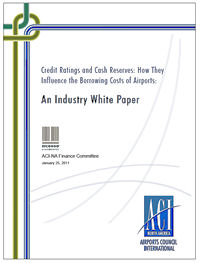
|
Ricondo & Associates, Inc. (R&A) prepared the Industry White Paper titled "Credit Rating and Cash Reserves: How They Influence the Borrowing Costs of Airports" recently released by Airports Council International - North America (ACI-NA). The paper discusses the influence of credit ratings and cash reserves on the borrowing costs of airports.
The request for the White Paper stemmed from an airport - airline roundtable discussion at ACI-NA's 2009 Economic and Finance Conference regarding ways in which the two industries could work together to control airport costs. As part of the discussion a representative of Alaska Airlines introduced six "red flags" that, in the carrier's opinion, indicate an airport's interests may not be aligned with those of the airline. One of the elements the Alaska Airline representative cited was the difference between airport and airline credit ratings, which spurred a debate with audience members regarding the importance of high credit ratings to airports in order to reduce borrowing costs and maintain access to the municipal bond market. Central to this debate is the different viewpoints of airports and airlines regarding the level of cash reserves and debt service coverage required to maintain an airport's credit rating, and whether achieving such high ratings places costs on the airlines that outweigh the benefits.
The goal of both the Finance Committee and R&A in developing the White Paper is to present information to the industry regarding the difference in credit ratings between U.S. airports and airlines, review the relative importance of credit ratings to the two industries, and examine how lower interest costs achieved through higher credit ratings and the application of airport cash to a capital program influence the borrowing costs of airports. The paper is designed to promote discussion between airport sponsors and their airline tenants regarding these issues, and thus presents observations regarding the
findings rather than drawing conclusions and recommending any particular actions.
This paper was prepared at the request of the ACI-NA Finance Committee, which provided oversight of the project, to promote discussion within in the industry, and with their airline partners, regarding how cash reserves support the sound credit ratings of Airports and thus help reduce borrowing costs for critical infrastructure projects.
Click here or on the cover image above to access a PDF version of the complete report.
White Paper
EV Infrastructure 101: An Early Market Guide for Facility Managers

|
The new age of mass-market Plug-in Electric Vehicles (PEVs, or EVs) is here as the first shipments of the Chevrolet Volt and Nissan Leaf have arrived while the Tesla Roadster, a high-performance all-electric vehicle, has been selling for over a year. According to the US Department of Energy, up to 45,000 PEVs could be available for US drivers by 2011 and that's just the beginning.
In his 2011 State of the Union address, President Barack Obama called for putting one million EVs on US roads by 2015 to build on America's technical leadership, create new jobs and reduce transportation dependence on foreign oil. Pike Research anticipates the U.S. will be the largest market for EVs in 2015, followed by China and Europe.
This paper was prepared by Ken Sapp, Vice President, Linc EnergyHub, The Linc Group, an ABM Company.
Click here or on the cover image above to access a PDF version of the complete report.
FREE Whitepaper
PAVIX: Proven Winner for All Airport Concrete Infrastructure
International Chem-Crete Corporation (ICC) manufactures and sells PAVIX, a unique line of crystalline waterproofing products that penetrate into the surface of cured concrete to fill and seal pores and capillary voids, creating a long lasting protective zone within the concrete substrate.
Once concrete is treated, water is prevented from penetrating through this protective zone and causing associated damage, such as freeze-thaw cracking, reinforcing steel corrosion, chloride ion penetration, and ASR related cracking.
This white paper discusses how the PAVIX CCC100 technology works and its applications.

